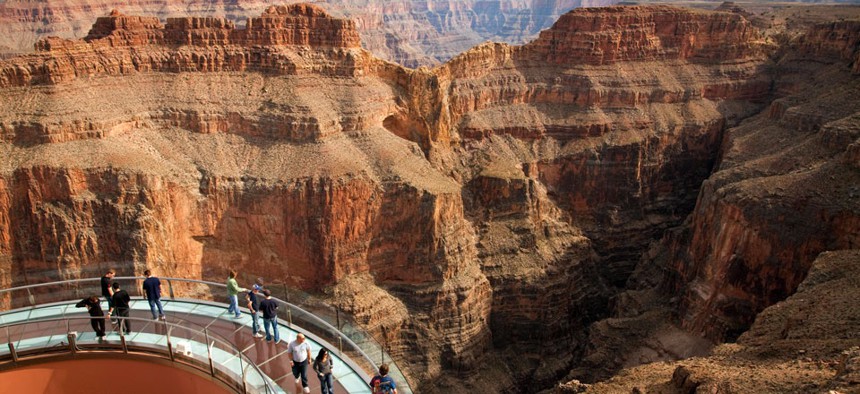
PRNewsFoto/AP File Photo
It’s Official: Shutting Down National Parks Last Year Was Bad for Local Communities
Every dollar of state emergency funding generated $10 in visitor spending during the 2013 government shutdown, the Park Service found.
National Park Service officials said a 7.9 million drop in park visitors during last October’s 16-day government shutdown cost local economies $414 million, with gateway communities within 60 miles of 45 major parks losing $2 million.
Every dollar of emergency funding states ponied up for 14 national parks before the end of the shutdown generated an estimated $10 in visitor spending in local restaurants, hotels, gas stations and outfitting stores, according to an agency report on the economic impact of the 2013 shutdown released Monday.
The previous year, park visitors nationwide generated $26.8 billion in economic activity and supported 243,000 jobs, according to the Park Service’s report on 2012 visitor spending, which was also released March 3. The economic impact of the nation’s 401 national parks varied considerably. The Grand Canyon, for example, attracted 4.4 million visitors and supported 6,000 jobs, whereas the Lincoln Boyhood Home in Indiana saw 133,000 visitors and supported 93 jobs locally.
Speaking from the Great Smoky Mountains National Park in Tennessee and North Carolina, Interior Secretary Sally Jewell told reporters in a Monday conference call that the studies help officials make the case that parks are a good investment. Park budgets have not kept pace with costs, she said, noting the agency is grappling with an $11 billion maintenance backlog.
National Park Service Director Jonathan Jarvis said the agency prepared the 2012 economic report using updated software that offers greater transparency but changed the methodology of calculating local impact, making comparisons with past reports tricky. The 2013 report, due out this summer, will reflect the losses from the shutdown.
The Park Service is preparing next year to launch a public awareness campaign in time for the 2016 centennial celebration of the service. “Though budgets have declined, we still have a vibrant organization,” Jarvis added.
In the Washington area, 49.5 million visitors in 2012 spent $928.6 million in surrounding areas, supporting 12,000 jobs.







